The surprise Babylon 5 HD remaster came out on Blu-Ray recently. Something I was curious about was how difficult it would be to combine the 4×3 Blu-Rays with the 16×9 DVDs to get a 16×9 pseudo-HD version of the show, with the edges upscaled but the center using real film.
I did a quick test on a frame from “Points of Departure,” and the answer is “not as easy as I hoped.” I’ve tried this technique before, matching and blending the same film from two different releases (and, apparently, two different digital scans), and I’ve also run into this problem of the film not scanning perfectly flat, and having some amount of distortion. I’d have to do further research to see if there are tools to address this that I have access to,1It feels like a combination of technologies should be able to solve this; I’ve got two slightly different sources of the same ground-truth. The HD frame shows exactly how 3/4th of the SD frame should look after it’s upscaled, so it should be possible to have a computer program compare the two, adjust the color, size, rotation, and proportion of the SD frame to match the HD one as closely as possible, apply some ML upscaling (ideally using the very shot that’s being upscaled as training data so the computer can extrapolate the lost detail at the sides of the frame from the existing detail in the middle), and blend the two sources. I know all these features exist independently, but I have no idea how to get them all into one tool. There might also be some complications with the DVDs needing to be detelecined and having scanline issues in the raw data. so this is just a quick test and comparison using Photoshop. The vertical framing of the DVD and Blu-Ray don’t match exactly, and the DVD’s colors are a little more contrasty, so I had to make some adjustments to match better.
First off, the test image merging the two sources. I upscaled the DVD frame using an AI tool, color-corrected it as described above, and added some grain, while softening the border between the HD frame and the widescreen one:
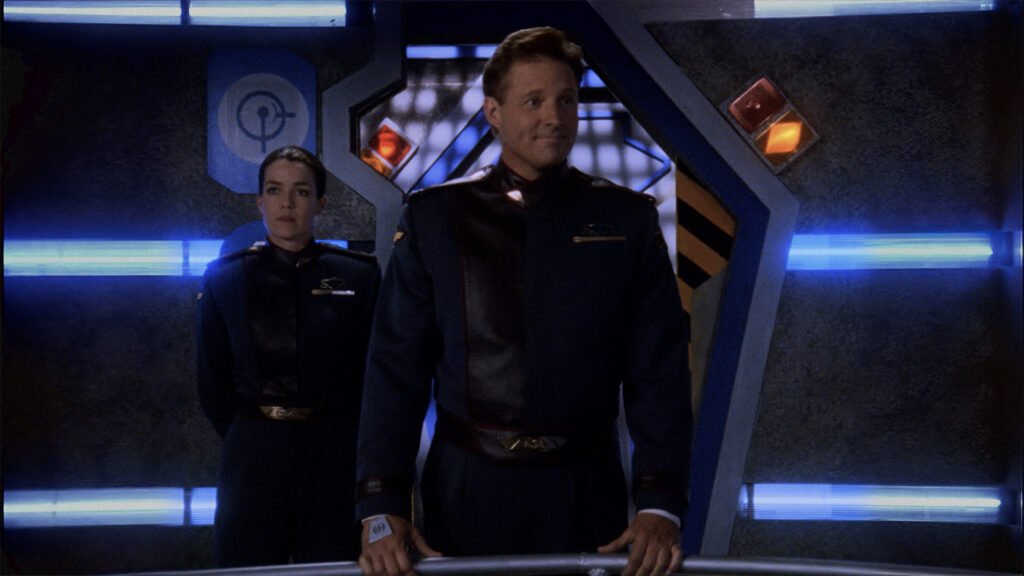
It could be worse!
Now, the quality comparisons. Here is a straight split image, comparing the DVD and the Blu-Ray (the DVD is on the left, if the pillarboxing on the right doesn’t give it away). Because I am cruel to old technology, for these images I scaled the DVD screencap up without any interpolation, so it’ll look pixelated rather than just blurry.
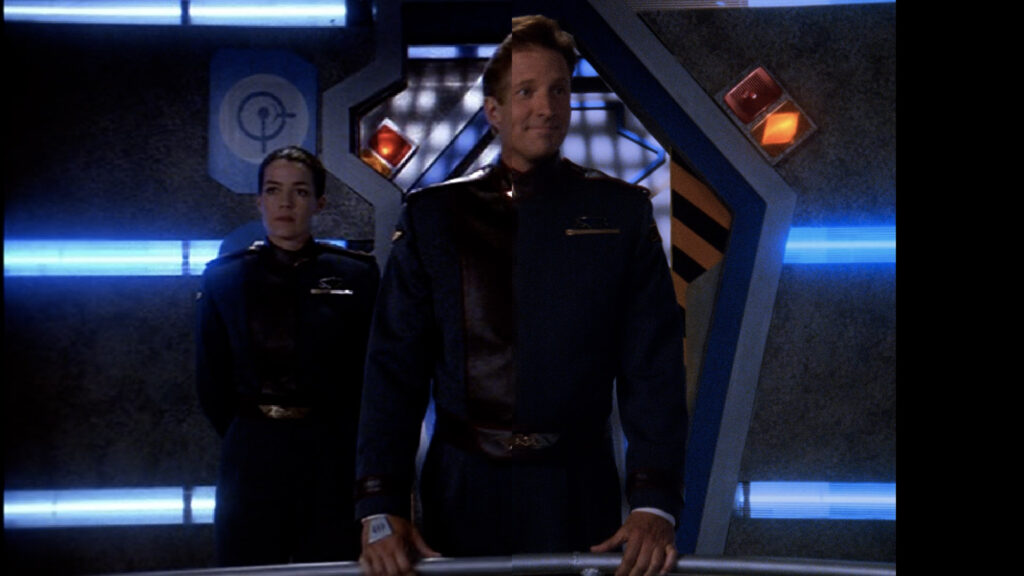
Sheridan is noticeably taller on the Blu-Ray. It turns out the widescreen version (at least in this shot) also expanded the frame vertically. This next one zooms in the DVD screencap a bit more, so they line up properly, even though it crops out some of the DVD picture. Check out the fine detail on the HD side, like the EA logo on Sheridan’s belt buckle, or the ribbing on the light panels on the wall.
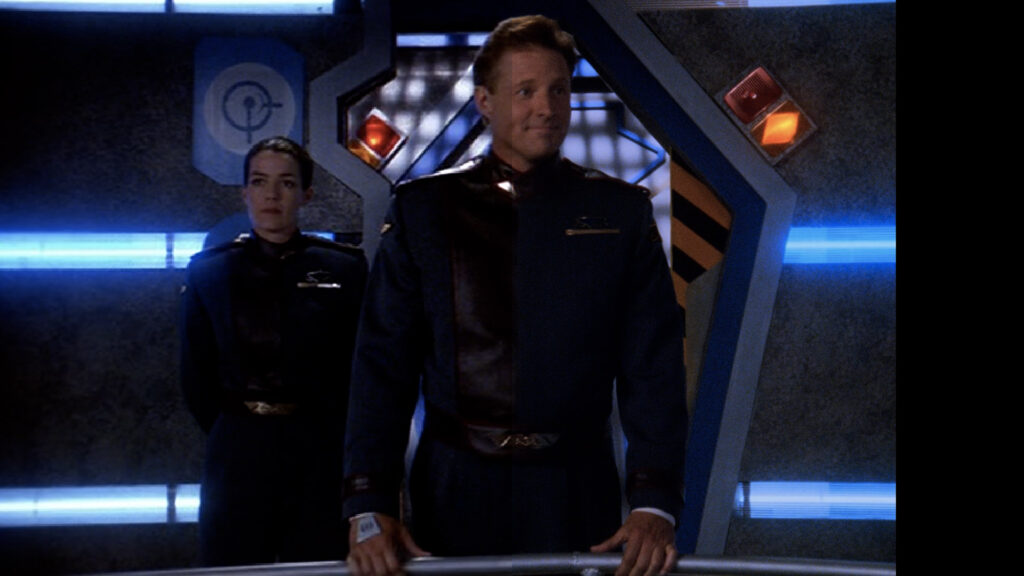
And, finally, I uncropped the above image, eliminated the split-screen and put a red outline around the Blu-Ray screencap, so you can see how the framing is different. To be clear, I’ve done this with one frame of one episode, I won’t say this exact difference applies to every shot in every episode, some may have more information on the bottom in the widescreen version, some may even be cropped in vertically on the DVD, as an ancient website analyzing the first widescreen releases of B5 proposed.
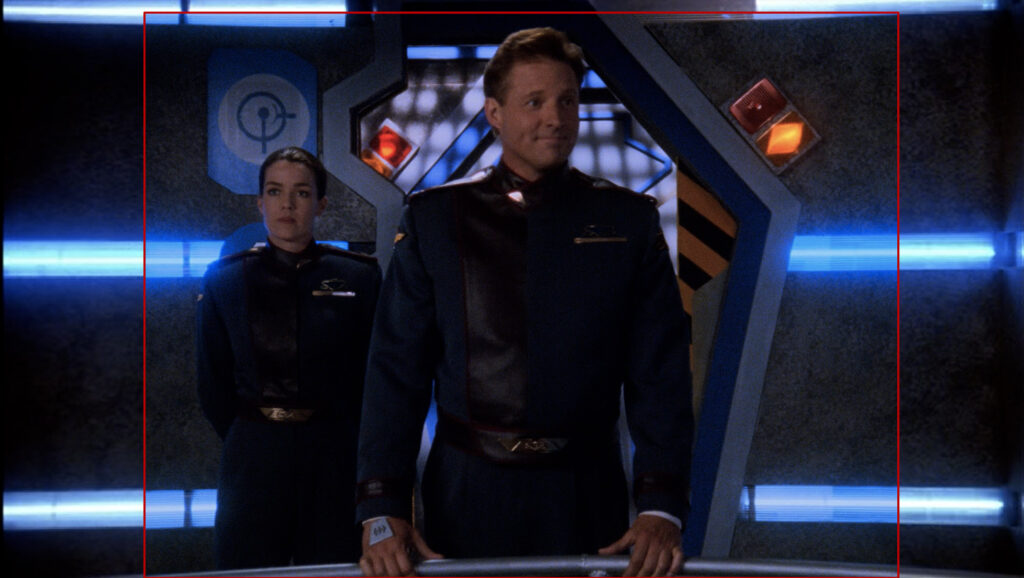
As a bonus, here are uncompressed PNGs of the source frames at their original resolution:2More or less, the concept of “original resolution” is a little wacky with the anamorphic DVD format.
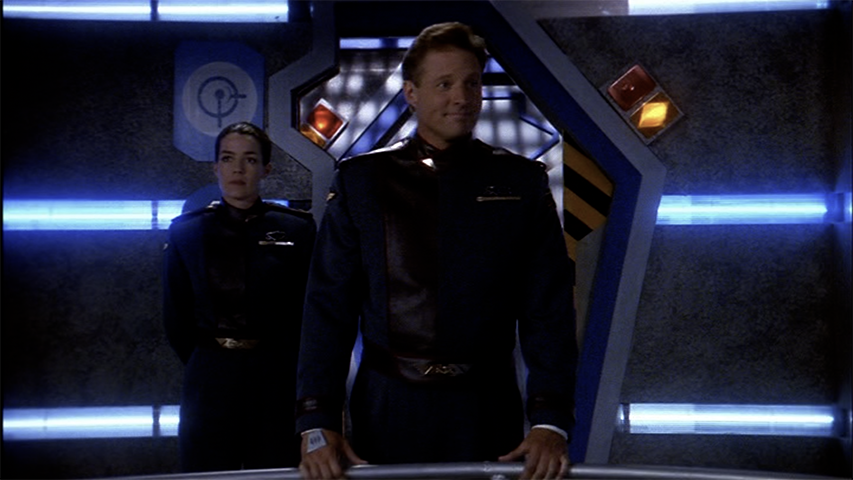
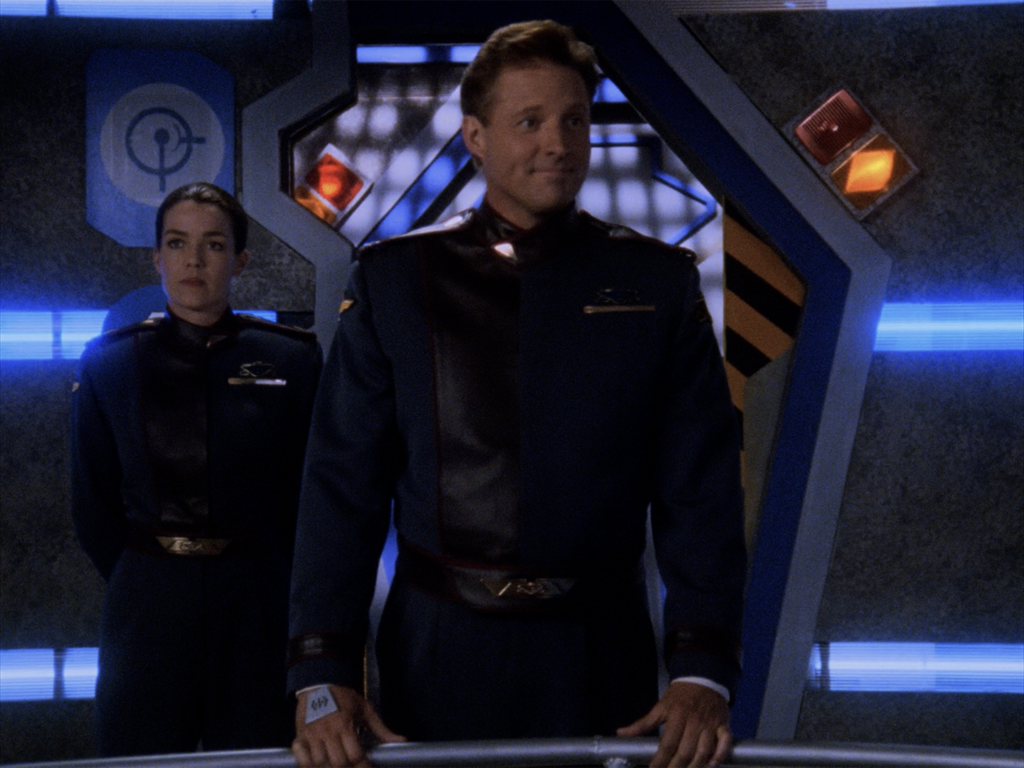
| ↑1 | It feels like a combination of technologies should be able to solve this; I’ve got two slightly different sources of the same ground-truth. The HD frame shows exactly how 3/4th of the SD frame should look after it’s upscaled, so it should be possible to have a computer program compare the two, adjust the color, size, rotation, and proportion of the SD frame to match the HD one as closely as possible, apply some ML upscaling (ideally using the very shot that’s being upscaled as training data so the computer can extrapolate the lost detail at the sides of the frame from the existing detail in the middle), and blend the two sources. I know all these features exist independently, but I have no idea how to get them all into one tool. There might also be some complications with the DVDs needing to be detelecined and having scanline issues in the raw data. |
|---|---|
| ↑2 | More or less, the concept of “original resolution” is a little wacky with the anamorphic DVD format. |
